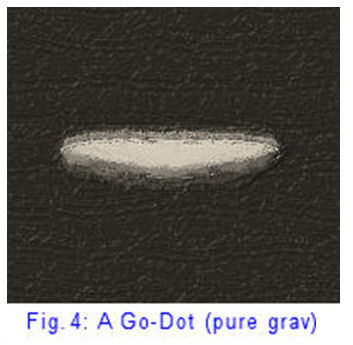|
Rules And Assumptions

That brings up three points of procedure. (1) As much as possible, we restrain our sequiturs to the simplest case possible. We will conjecture only the least complicated hypothetical larger structure, called the motherverse. (2) We assume the laws of science do not vary under any circumstances; and any emergent circumstances would only imply there are laws we do not yet understand. (3) for simplicity, we assume that space is the same inside and outside our universe, and that all universes are simply local effects. Each is of limited duration. Each is bounded locally, temporarily, and dynamically by its own cosmopause, which expands with ever greater velocity, and represents the outer boundary of the coherent mass/energy of the whole.
As mentioned elsewhere, it is not entirely clear yet if we should even think of these other structures as separate universes, or simply manifestations within an infinitely large universe that has undergone the type of paradigm shift like that introduced with the much expanded Hubble universe in the early 20th Century.

In simplest terms, our galaxy is still part of the known cosmos. The parts are integral to the whole. Most cogent is this question: is all the godot material (dark matter) in our universe the result of C-3, or can there be stray amounts of random godot ‘stuff’ drifting around that is part of the motherverse, but didn’t undergo our unique C-3?
Does material from other universes or structures blend with ours, especially the majority godot platelet material that is, by analogy, the common ‘hydrogen’ of the unseeable motherverse. Another way to state this generally is to ask if there is an underlying foundational universe composed of godots, in which C-3 universes briefly flare in and out of existence (over eons and vast spaces by our subjective measures); or if each universe is an entirely discrete volume that is hermetically sealed and self-contained. I have no answers for these questions, except to say that we must cautiously and systematically pry apart our assumptions to make way for possibly truer insights.
Simplicity dominates in what is essentially an Einsteinian or Gaussian thought experiment. Per Occam’s Razor, we want to stick with the simplest answer or construct at every turn. Given any choice between a simpler alternative and a more complex one, we will want to pick the simpler. The less stuff we 'make up,' the better, since this is a series of conjectures based on the first conjecture, that the expansion of the universe is caused by gravity. At the same time, we cannot slam the door on unexpected twists or complexities. This research will likely take generations to achieve further significant insights.
We are at the beginning of a clean, fresh paradigm. It does not discard the old (e.g., Standard Model), any more than Hubble's universe of trillions of galaxies did away with the laws of a single galaxy mistakenly seen as the entire cosmos.



NOW AVAILABLE: The book (article) by John T. Cullen is now available for purchase at Amazon.com and other sites or stores. Visit:
|
E-Book
|
P-Book
|
Browse or Buy at Amazon
The book linked at left is an e-book edition to browse; or buy & download from Amazon for your Kindle reader.
The middle link is for the corresponding print edition. This short book is a standard 6x9" trim size. More info at Amazon.com.
Most print editions are also available at Barnes & Noble online; or call/visit your local bookstore to order.
|
TOP
|